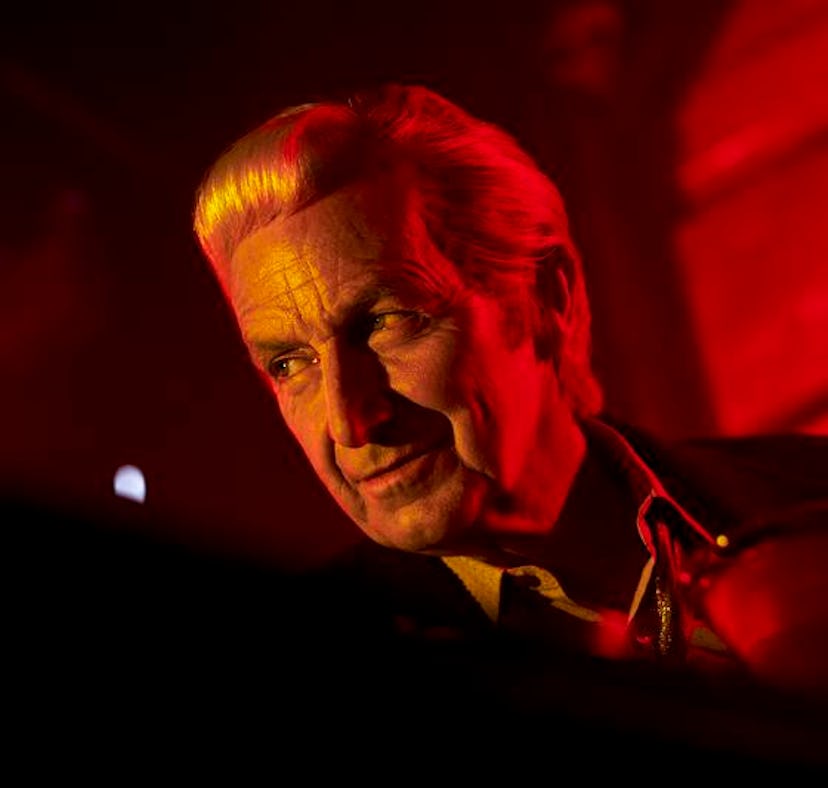
Big Daddy's Identity On American Horror Story, Explained
This show loves its symbolism.
Since its inception, American Horror Story has been as much about the ugly undercurrents of American life as it is a story about murder houses, asylums, and cults. Every season usually has a parable aspect, whether it’s the desperation of artists to be successful or how terribly those who are different are treated. But Season 11, American Horror Story: NYC, has taken things to a new level with the Big Daddy of it all.
Warning: Spoilers for American Horror Story Season 11’s final episodes follow. Since the debut of AHS: NYC, viewers have been theorizing about “Big Daddy.” A giant of a man who is never seen in anything but leather gear and a hood, he stalks his victims in early ‘80s Manhattan, sometimes physically assaulting them, sometimes silently standing in the shadows. Viewers suggested everything from him being Sam’s heavy to the personification of AIDS. But neither was precisely correct. Big Daddy, who has been in the shadows around Sam, seemingly unnoticed, finally gave chase in the show’s penultimate episode, with Sam running from him just as everyone else had.
But when Big Daddy caught Sam, instead of fighting, Sam went limp, giving himself over to the monster. At that moment, Big Daddy lifted his mask and transformed... into a blonde man in a bathing suit.
Fans would be forgiven for being confused, as Sam first fought the kiss the man planted on him before giving into his desires. It was the only time Big Daddy was seen without the mask. As he stalked the rest of the cast, from taking down a pregnant Hannah to patiently waiting for Gino in the show’s final montage, he remained a masked figure. But in all three, he was representing the same thing: death.
Nearly everyone in AHS Season 11 had already contracted HIV when viewers met them — or they are about to, whether they knew it or not. The season’s setting, June 1981, is the dawn of the NYC outbreak. The show intersperses it with a serial murderer trying to build a sentinel out of LGBTQ+ parts to ward off the horror facing their community; however, once Whitely was taken down in Episode 7, there were three more installments that focused on how nearly all of the protagonists succumb to AIDS.
In each case, the passing was symbolic. Aquatic mystical Pan-esque creatures came to collect Theo. Patrick was guided by his ex-wife’s ghost and sung offstage by Kathy. For Sam’s death, Big Daddy transformed into an Angel of Death — suggesting this was the person Sam slept with who passed on the disease that eventually took his life. After years of advocacy, even Gino gave up the fight as HIV became AIDS and let Big Daddy take him.
Finally, only Adam remained, the first man who bore witness and survived the plague.
All episodes of AHS: NYC are streaming on Hulu.